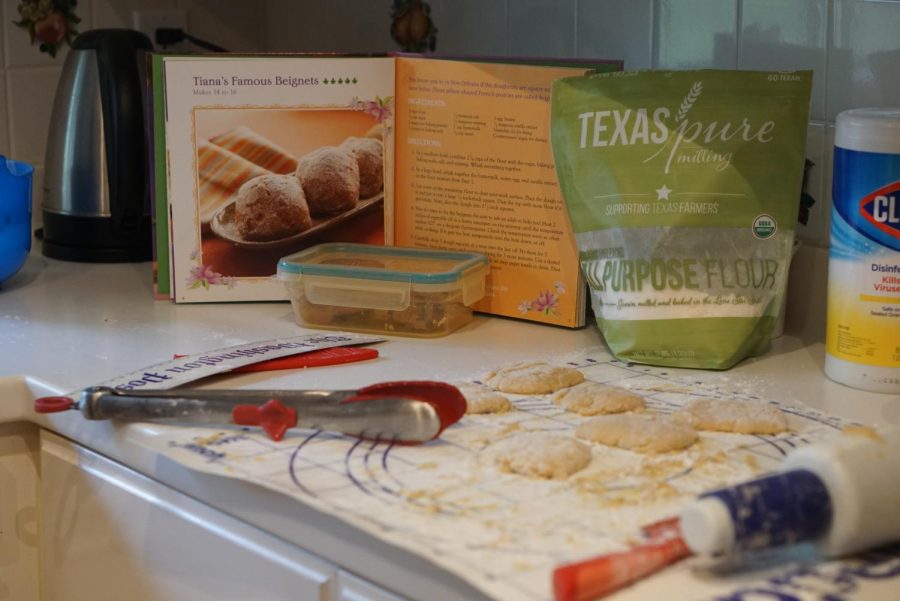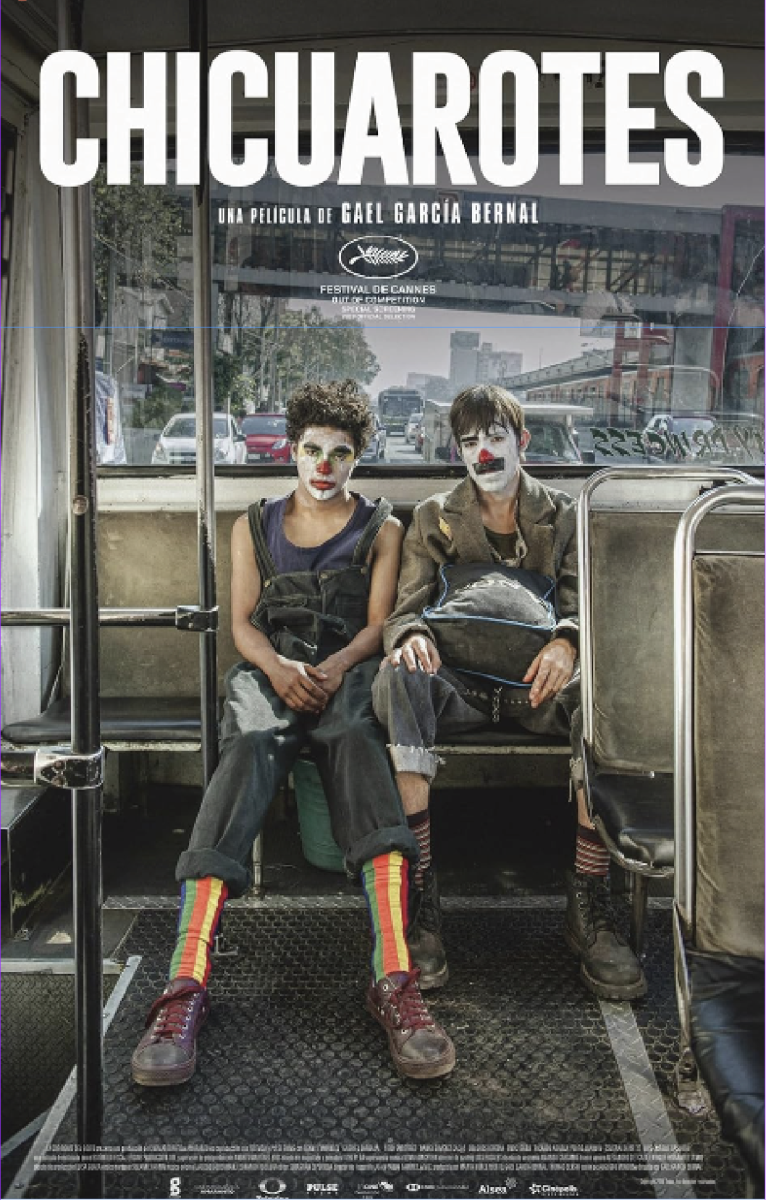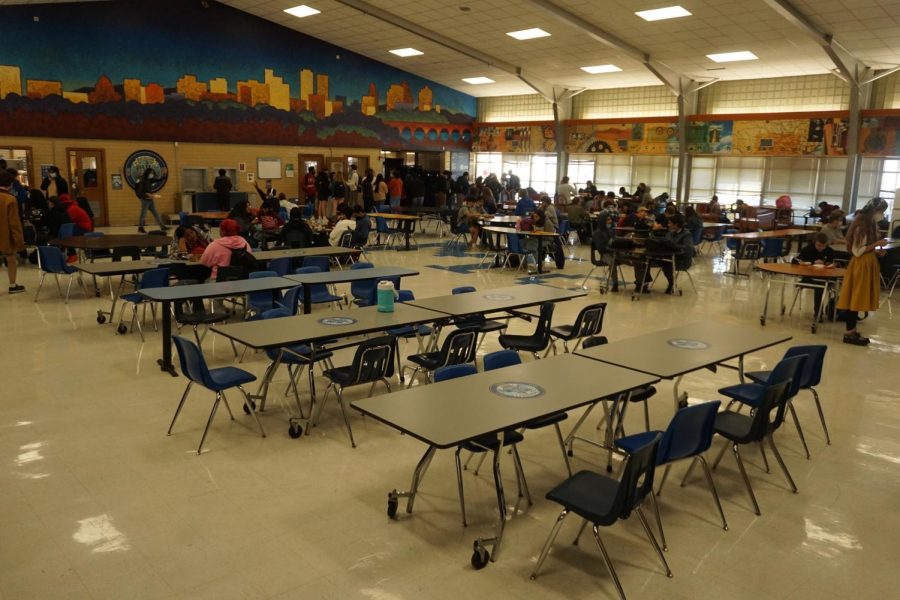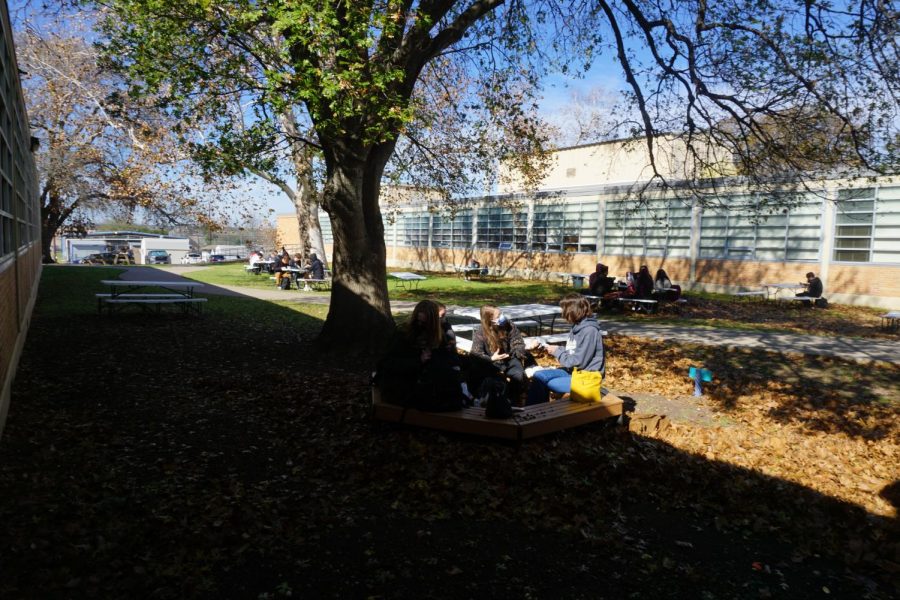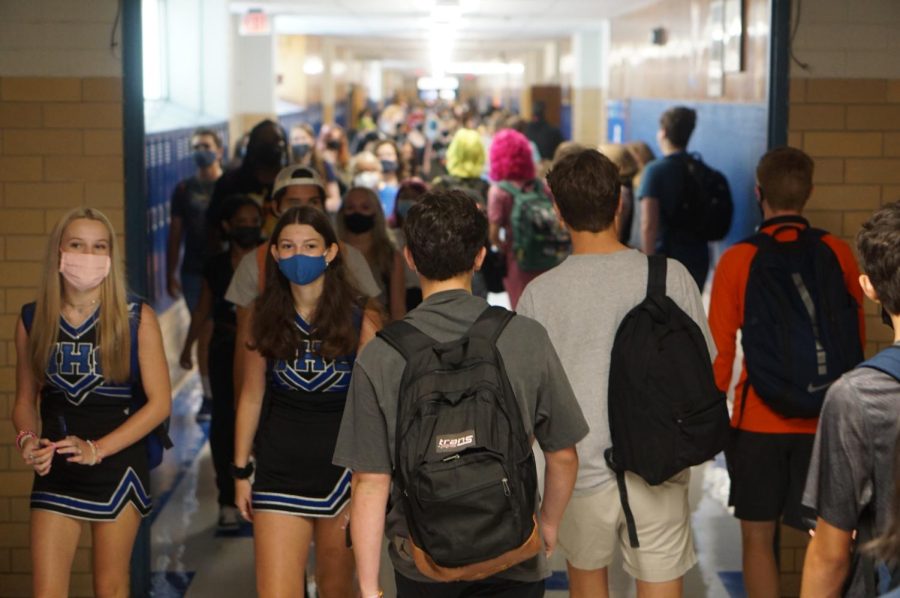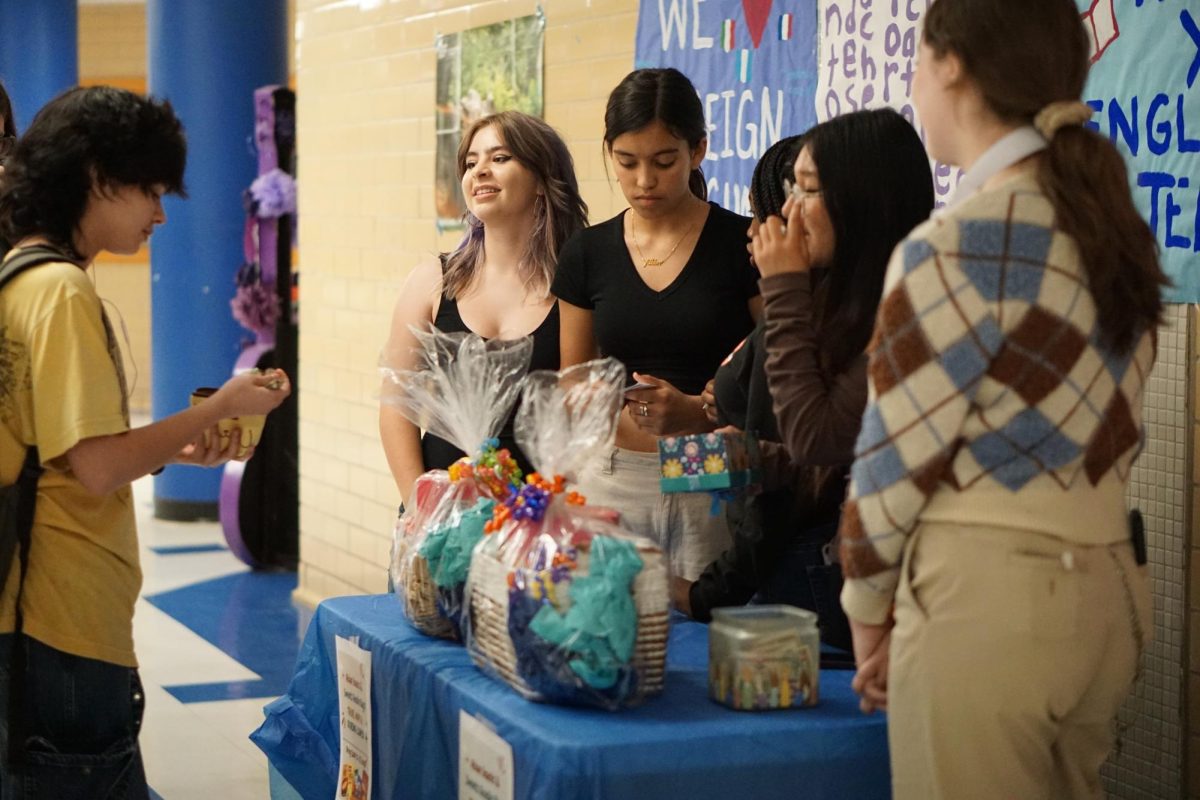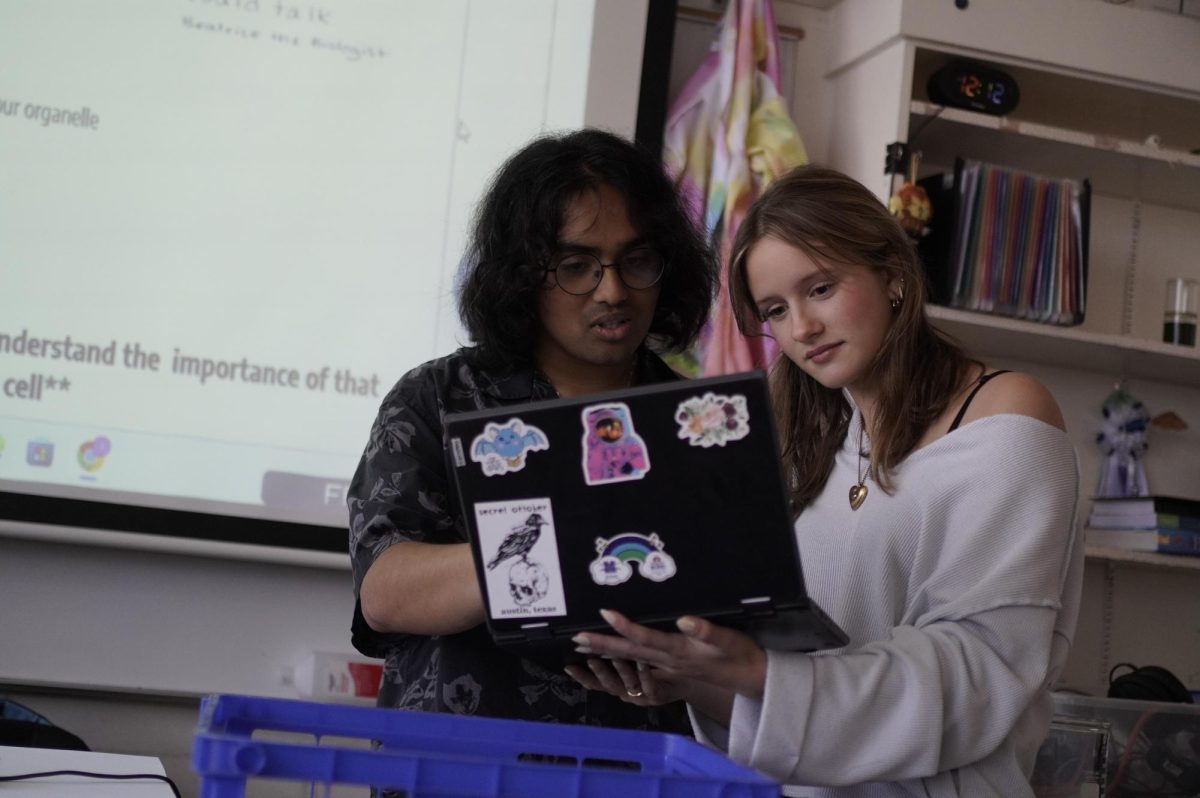Whether it is due to stress, boredom, or as a hobby, many McCallum students turned to bread baking during the extended spring break caused by a worldwide effort to reduce the spread of the coronavirus, or COVID-19.
The process for making bread is simple, and there are so many recipes on the internet that anyone can try to make it. A simple Google search will tell anyone an easy way to make bread, guiding them through the recipe step by step.
The accessibility of recipes and simplicity of the process, however, doesn’t explain why social media feeds all over Austin were filled with images of freshly baked bread.
Why did so many people turn their extended spring break into an extended spring bake?
Freshman Barrett Andrews is an experienced baker, and he decided he wanted to bake garlic and herb bread. To do so, he used the dry ingredients his family had around the house.
“My family is currently moderately low on food supply at the moment except for mostly dry ingredients such as flour, yeast, salt, spices, et cetera, that we’ve just had sitting in our kitchen,” Andrews said. “I’m trying to use up as much as I can with the ingredients available to use in meals during social distancing.”
So baking bread helps people to stretch their groceries and maintain social distancing for a longer period between food runs to the grocery store. But baking bread also generates a far more immediate feeling of success. There is a rewarding feeling when a baker finishes something that they know will taste good.
That feeling is what prompted senior Apollonia Ferrante to bake bread. She said she loves food and that the extended time at home afforded her the opportunity to try her hand at baking, something she always wanted to try but never had the time.
“I made bread because I LOVE bread so much,” Ferrante said. “I could eat it all day, … and I’ve always wanted to make bread, and quarantine is the perfect time to do that.”
Ferrante found a recipe for beginners and got to work. To her, baking the bread was the most rewarding part because of how fun and rewarding it was.
Like Ferrante, junior Elle Hemenway looked up a recipe and found one she liked on the Washington Post website. It was a recipe for “White-Wheat Sandwich Bread,” which provided step by step instructions and a detailed list of ingredients.
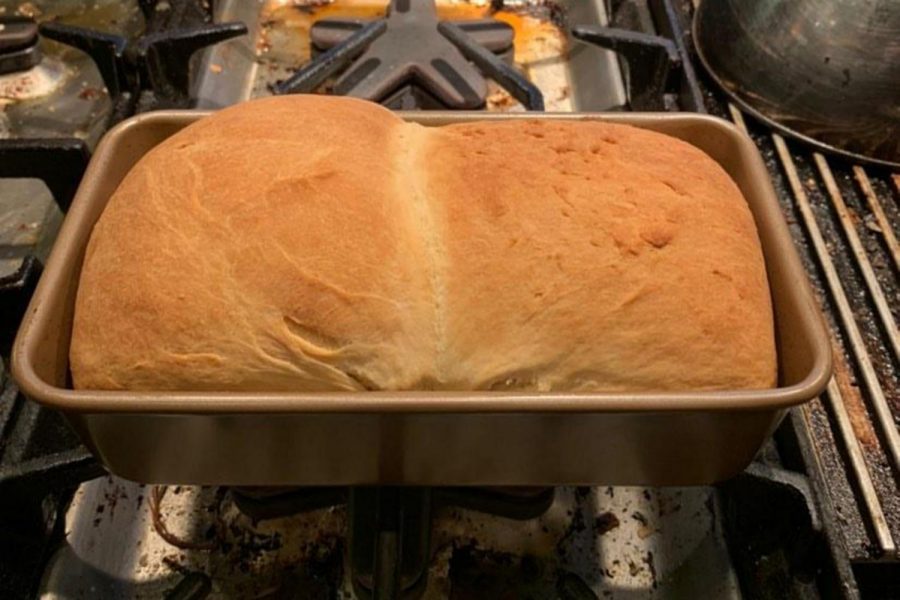
Senior Madison Mills made this milk bread from his own recipe, but he also made Hokkaido milk buns in a heart-shaped pan over the extended spring break. Photo courtesy of Mills.
Even though her choice of bread was basic, Hemenway deemed her foray into baking an unqualified success. “It was just regular white bread,” she said, “but it tastes better than it looks. … My grandma said it reminded her of the bread her grandmother used to make,” Hemenway said.
Besides, she said, the process of making bread is like therapy.
“Kneading bread is good for stress,” she said.
Andrews agreed 100 percent, saying that baking bread is a good way to relieve the anxiety caused by being trapped at home on lockdown.
“I have this running gag with my other baker friends that we ‘stress bake’ because every time something happens we end up coming to school giving out extra batches of whatever we made,” Andrews said. “It’s very comforting, and there’s this sense of pride when you finish the end product of what you made. Kneading dough also allows you to let out tension, and it’s also a good arm workout depending on the kind [of bread] you’re making.”
Sophomore Annabel Winter took to the kitchen as well but not to get a workout or to relieve stress. Rather, she ventured there to make beignets because she saw videos of people making them during the COVID-19 quarantine, and seeing the delicious fried pastries took her back to her childhood watching Princess and the Frog.
“I wanted to make [beignets] ever since I was little because of how good they looked and because now I had the opportunity to do it.”
She was handicapped, however, by a some missing ingredients, mainly a good oil for frying. She learned the hard way that olive oil is no substitute for canola or vegetable oil when frying beignets, but after a clandestine run to the grocery, she emerged with canola oil, ready to give it another go because if at first you don’t succeed, fry, fry again.
Even with the correct oil, however, she faced another challenge: her lack of a kitchen thermometer, which made it hard to tell when the oil was hot enough and how long to keep the beignets in the pan. When her less-than-perfect beignets were still tasty, she deemed her culinary efforts a success.
“I definitely think they could have turned out better, but they were pretty good for a first go because I feel like they are pretty difficult to make.”
Winter and the other student bakers aren’t the only ones spending their time away from school baking and experimenting with new recipes.
Guidance counselor Shelley Goldstein is working on mastering the art of sourdough bread. Sourdough requires a longer process than most, and it requires a starter that can be used for other things than bread.
“I made my starter from scratch on Tuesday of spring break, and it was ready this week,” Goldstein said. “Baking sourdough bread is a 2-3 day process once you get a robust starter. You bake it in a Dutch oven at 450 degrees. I did a lot of research and joined a Facebook sourdough group and watched lots of videos. I have also made crackers and pizza dough from the leftover starter. It is a tradition to name your starter, and mine is named Ruth.”
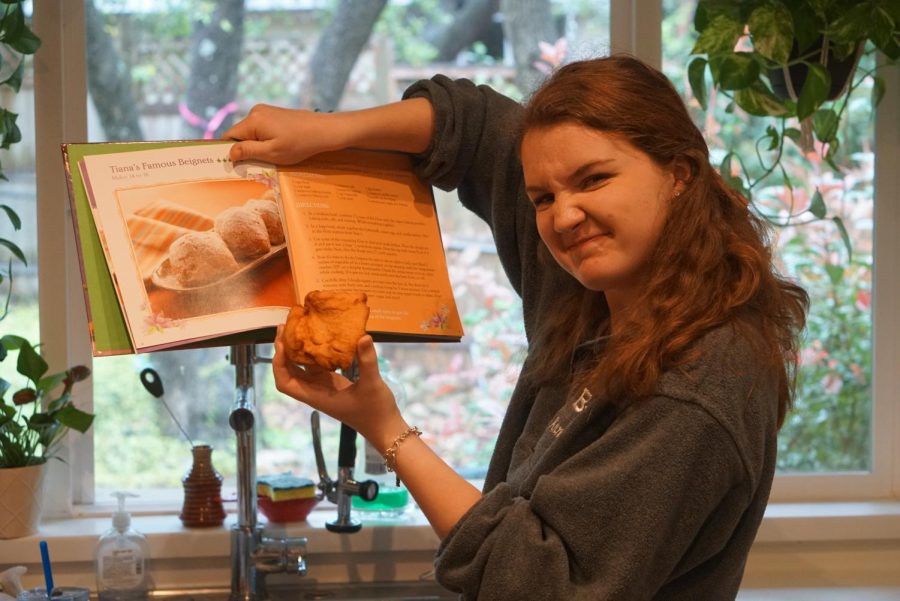
Sophomore Annabel Winter deemed her culinary efforts a qualified success based on the degree of difficulty and the taste of her final product: Princess and the Frog-inspired beignets. Photo by Dave Winter.
Ms. Goldstein has not only been making bread, but she has used her free time to learn how to cook other foods.
“We learned how to use our InstantPot also and have made some incredible soups,” Goldstein said. “And I made some cookies. My two daughters live across town, and my oldest just got back from Spain. So I bring them goodies but we stay 6 feet apart and just talk in the driveway.”
For many people, baking is a way to bring people together, and while that might be hard right now, baking is giving many people a way to pass time, relieve stress and provide tasty snacks. While it might not be physically possible to be together right now, making bread is helping to bring people together sharing a similar cooking experience even if they can’t sit together at the table and eat the product of their culinary labor.
Shout out to junior Emily Arndt who suggested that we track down some bread makers as part of our continuous quest to find out what you all are doing during your extended spring break. As a result of Arndt’s suggestion, we created a bread competition offering $10 to the Mac Knight who made the tastiest looking bread during their prolonged COV-acation. To help us determine our winner, cast your vote by selecting the bread that you think looks the tastiest. We’ll leave the poll up for a week and reveal the winner on Friday April 10 at noon.



